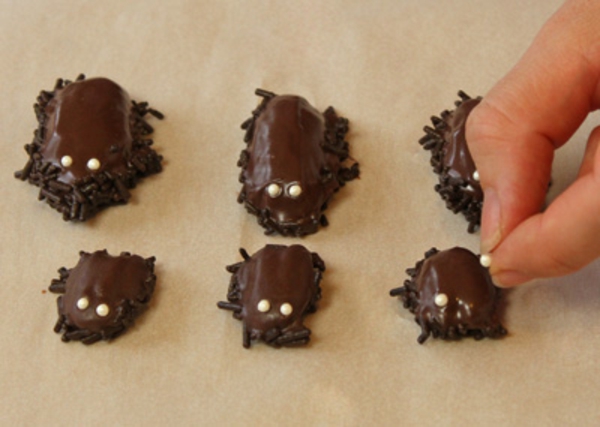Can I Use Parchment Paper Instead Of Wax Paper
Can I Use Wax Paper Instead of Parchment Paper? Q. Can I use wax paper instead of parchment paper? D. Piazza, San Diego, CAA. Wax paper and parchment paper can be used interchangeably in many applications, but not. Wax paper melts when exposed to heat, while parchment can withstand temperatures up to 4. F, depending on the brand. Both types of paper are a great surface for rolling out pastry dough to prevent sticking and for layering cookies and candies.
Parchment paper is coated with silicone. It comes in rolls and is used mainly to line baking sheets. According to The Cook's Thesaurus, you can substitute other.
But parchment paper is the one to choose when lining a baking sheet for a batch of cookies or a pan for. It’s also the only paper to use when cooking en papillote (i.
· Best Answer: The yeses are right. Both waxed paper and parchment paper will create a non-stick surface but one uses wax (impregnated in the.
- Status: Resolved
- Answers: 7
'https://cooking.stackexchange.com/questions/25043/is-it-okay-to-use-aluminium-foil-instead-of-parchment-paper-while-baking-cookies' h='ID=SERP,5181.1'>Is it okay to use aluminium foil instead of parchment paper.
I don't have access to parchment paper or even butter paper for that matter. I just read on a website that it'd be okay to use aluminium foil as long as I apply a.
There’s one exception to the rule of keeping wax paper away from heat: it can be used to line the bottom of.
Foil vs. parchment vs. Here's when to use them.
Wax paper and parchment paper can be used interchangeably for some tasks; however, properties of wax paper inhibit its use for certain cooking duties. Usually wax. Is there a difference between parchment paper and waxed paper? Can waxed paper be used to line a cookie sheet? I have always used parchment paper instead.
Use wax paper to line dishes that aren't going in the oven. Chowhound. You probably know that foil is silver- colored and parchment paper and waxed paper are, well, waxy, but does your knowledge about them end there? These three kitchen staples have a variety of uses that can make cooking time much simpler.

Here's the difference and tips on how you should use them. Parchment vs. wax paper Both waxed paper, aka wax paper, and parchment paper are coated papers. The difference is in their coatings.
Parchment paper - - which is available bleached and unbleached - - is coated with silicone, while wax paper is coated in, you guessed it, wax. Soybean or paraffin wax to be precise. Their coatings give them different uses. Chicken N Dumplings Easy. Parchment paper's silicone coating makes it heat- resistant and nonstick. Line baking pans with this paper wonder and food won't stick to the pan.
This trick can't be duplicated with wax paper because the wax will melt, making it useless as a nonstick barrier. Wax paper's best use is lining countertops and tables before rolling out pie crusts or kneading bread, to prevent a mess.
Wax paper can also be used to wrap food for cold storage or even line a pan for making something like fudge. Putting a piece of wax paper in between items you're freezing will also prevent them from sticking together. So, to sum it up, parchment paper is for hot and wax paper is for cold. Also, parchment paper can be used over and over again, unlike wax paper. Just wipe it off and you are ready for another use. Wax, parchment and foil. Alina Bradford/CNET.
Foil vs. parchment paper Foil is basically very thin aluminum. Many people use it to line cooking dishes for easier cleanup, which is a great trick, but foil has no nonstick properties, unlike parchment paper. You may end up with a little piece of foil stuck to the bottom of your roasted potatoes or cookies. Also, research by the International Journal of Electrochemical Science found that small amounts of aluminum may leach into food during the cooking process.
Like with wax paper, if there is heat your best bet is parchment paper. Some people line their ovens with foil to prevent messes. This is a big no- no, too. It can damage your oven in several different ways. It can also prevent proper air circulation, which can alter how your food cooks. Foil still has its uses, though. Use it to: Wrap sandwiches. Wrap meat for short- term freezing.
Cover bowls to hold in heat Make disposable funnels. Prevent messes around the stove.
That's just the beginning. Here are 1. Foil vs. wax paper OK, so foil and wax paper have a lot of similar uses, but which one is better? A good rule of thumb is if you don't want it to stick, use wax paper and if you want to insulate, use foil.
Aluminum foil can also be reused or recycled, unlike wax paper. So if saving the planet is on your mind and you can't decide between foil and wax paper, choose foil. Before slipping it in the recycling bin just make sure to rinse it off. Now that you know what to do with these three, your time in the kitchen will be easier and less messy. Editors' note: This article was originally published on November 1.
